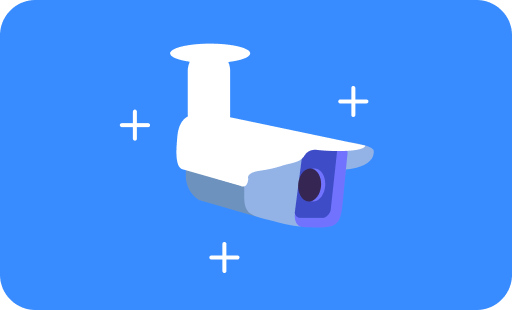Manned Guarding or Remote Video Guarding? Weighing the Pros and Cons
- Physical security

When choosing the best security option, you might be torn between using manned guarding, or remote guarding with video surveillance. Recent security trends enabling off-site guards to monitor sites and respond to alarms in real time. Before you commit to either option, we'll help you consider their pros and cons to decide which is best for your business.
What are the pros and cons of manned guarding?
As a general rule, manned guarding is the better option when there is a risk of bodily harm. For example, security guards are particularly effective at protecting concerts and sports events, as they are on hand to prevent injuries and harm in crowds of people.
Manned guarding advantages:
- A security guard acts as a visual deterrent.
- Security guards can quickly respond to either report or deter a crime happening on-site.
- Guards can quickly respond to other on-site issues such as weather damage and gas leaks.
Manned guarding disadvantages:
- The expense of manned guarding is a consistent problem, and it isn’t likely to go away as the cost of labour continues to rise. In the US, manned guarding could become particularly costly due to mandated wage increases.
- If the site is large, it can be difficult for an individual guard to respond quickly to threats, unless a team of guards is employed.
- Actions of security guards, such as wrongful detention, could lead to legal action and insurance claims, which could affect a company’s reputation.
- HR issues such as shift management, job satisfaction, and loyalty are factors that can impact a security guard’s performance.
What are the pros and cons of remote guarding with video?
Remote CCTV monitoring has the advantage over manned guarding when you want to protect assets and property. A much more cost-effective solution, video surveillance allows monitoring operators to keep an eye remotely on multiple unattended sites, react to potential alarms and respond quickly in the event of a break-in.
Video monitoring advantages:
- Security cameras and motion sensors provide reliable 24/7 surveillance.
- Cameras record evidence of crime as well as enabling operators to respond to alarms in real time.
- Unlike human guards, security cameras cannot be easily intimidated or disarmed!
- The physical presence of security cameras on-site acts as a deterrent to criminals.
- Security cameras can survey a large surface area, and with this information, it is possible for one ARC / central monitoring station to protect multiple sites.
Video monitoring disadvantages:
- There is an initial cost for installers to set up monitoring equipment and survey the site for blind spots. However once installed, the average maintenance cost over a year is less than employing a security guard.
- Remote guarding's use of cameras and motion sensors is highly effective in detecting potential criminal activity, but it can generate a large number of false alarms from a swinging gate to an animal walking past the camera. Human operators have to neutralise these alarms, creating an overwhelming amount of unnecessary work that can distract their attention from genuine alarms.
- There is room for error when operators become tired or lose concentration, as there is a risk they could miss genuine alarms.
A solution to the issue of false alarms and retaining the focus of monitoring operators is to integrate cutting-edge video analytics like Calipsa into your remote video monitoring system. Calipsa’s software uses AI to filter out false alarms, allowing operators to focus on genuine alarms.
Although it’s an additional cost, incorporating video analytics technology can still be more cost-effective than manned guarding, and the latest advances in AI bring new possibilities for remote video monitoring to become even more effective.
Should I choose manned guarding or remote video guarding?
The disruption of the COVID-19 pandemic has created an increased demand for security guards in places such as supermarkets, hospitals and testing facilities. Sadly, in the UK, this has correlated with male security guards having the highest death rate; with 100.7 deaths per 100,000 according to the Office of National Statistics.
Taking this into account, a move towards remote guarding lays a good foundation for security systems in times of a pandemic, as well as protecting the lives of security guards. Even with an effective vaccine, precautions will still need to be taken in security guards' places of work, making remote guarding an ideal solution.
Overall, a combined approach of both physical and remote guarding is useful if there are a range of security objectives. Yet, as these pros and cons show, in situations that are not focused on protecting people from physical harm, remote guarding is a cost-effective and successful security solution.
Intelligent video analytics technology like Calipsa can help to counter problems with remote monitoring solutions, as it can increase operators' performance and efficiency, helping you to make the most out of remote video guarding.
Want to learn more about remote video guarding? Download our FREE whitepaper:
 Interested in enhancing your remote guarding systems with intelligent video analytics? Click here for a free trial.
Interested in enhancing your remote guarding systems with intelligent video analytics? Click here for a free trial.
Editor’s Note: This post was originally published in July 2020 and has been updated for accuracy and comprehensiveness.







5 comments